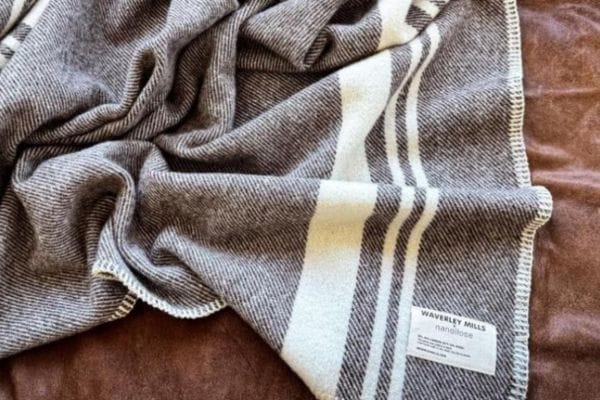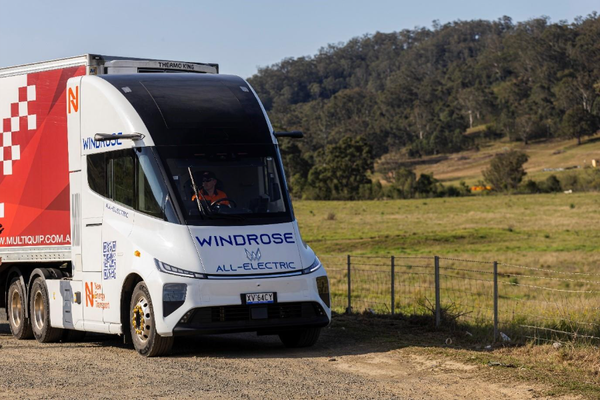A local spin on sustainability
Wool is woven into the fabric of Australia – economically, culturally, and now environmentally.

As the global fashion industry races to reduce its environmental impact, Australian wool is becoming a key contender in the push for eco-conscious textiles.
It is one of the country's most valuable agricultural exports, contributing around $3 billion to the economy each year and accounting for around 25% of the global market share.
More than just a commodity, it is also an inherently sustainable fibre: renewable, biodegradable, and durable – and is now part of a new wave of innovation driven by research, collaboration, and sustainable production and processing. Here are three of the latest initiatives in the space.
Fancy fibres
An initiative that is redefining the potential of low-grade Merino wool is being led by Deakin University’s Institute for Frontier Materials (IFM) in partnership with Country Road and Full Circle Fibres.
The 'Mud to Marle' project aims to showcase a fully domestic process to transform lesser-value wool from the sheep’s extremities into fine yarn suitable for fashion garments.
According to Full Circle Fibres owner and founder Meriel Chamberlin, about 3% to 5% of Merino fleece consists of locks.
“These shorter fibres are perceived as having a lower value than the rest of the fleece and tend to be used in homeware and chunkier knit garments as it is difficult to process them into fine yarn,” Chamberlin says.
Through trials conducted at Deakin University’s Future Fibres Facility, the team has demonstrated how locks can be blended with cotton to create a refined textile product in collaboration with textile manufacturer, Loomtex.
Despite Australia’s global reputation for high-quality wool, Full Circle Fibres says the country has limited infrastructure for processing raw fibre at scale.
The collaboration, supported by a grant from the Country Road Climate Fund, aims to prove the viability of end-to-end production onshore and align with rising demand for sustainability by prioritising more efficient processes, such as targeted dyeing techniques that reduce water and energy use.
It says samples of the Mud to Marle wool-cotton blend have been tested in prototype garments including T-shirts, jumpers, pants, and the project has also unlocked an additional $300,000 for a three-year industry partnership to accelerate Deakin’s research into wool cotton products.
Processing power
Sustainable insulation has taken a leap forward with Planet Protector Group’s (PPG) newly opened fibre manufacturing facility in Melbourne.
With limited wool-processing infrastructure in Australia, the company says it has stepped in to fill a crucial gap, boosting the viability of local manufacturing.
PPG originally focused on replacing expanded polystyrene (EPS) packaging through its Woolpack technology which sees wool waste transformed into an alternative to polystyrene in cold chain packaging, while cutting landfill waste and supporting local farmers.
The company says the new facility will enable it to process waste wool for building insulation, as well as a variety of landfill-bound textiles including denim, recycled polyester, and pineapple fibres.
These are transformed into premium non-woven regenerative solutions for industries such as packaging, construction, geotextiles, acoustics insulation and bedding and furniture.
By eliminating reliance on fossil fuel-derived materials and driving domestic textile recycling, PPG says it aims to take a leading role in sustainable manufacturing.
With this in mind, the company is gearing up for a $10 million Series B capital raise to scale production and expand its market reach into India and Southeast Asia.
Woolly blend
Tasmanian textile manufacturer Waverley Mills has blended traditional Merino wool with a pioneering fibre called Nullarbor-20 developed by ASX-listed biomaterials company Nanollose.
Waverley Mills transforms raw fibre into finished goods onsite and says its partnership with Nanollose has resulted in the successful pilot production of 70 small blankets made from 70% wool and 30% Nullarbor-20.
According to the company, this was the first pilot production of a finished consumer product using Nullarbor-20, which is made by fermenting liquid waste products from food industries into cellulose, a cotton-like raw material.
The Nullarbor-20 fibre is made by strategic partner Birla Cellulose in around 18 days in a production process that uses little land, water or energy, unlike traditional cellulose obtained from less sustainable tree-based sources such as cotton, flax and timber.
Nanollose says the integration of Nullarbor-20 into Waverley’s existing manufacturing processes and equipment was seamless, validating its potential.
“It is fitting that our first pilot production of a finished consumer goods was achieved in collaboration with Australia’s leading woollen mill,” Nanollose executive chairman Dr Wayne Best said.
“We are delighted with the outcome of this project with Waverley Mills and the quality of the end product.”





